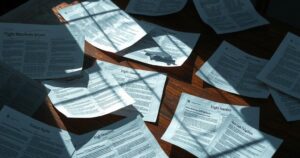Namibia Votes in Pivotal Election with Historic Female Candidate on the Ballot

Netumbo Nandi-Ndaitwah aims to become Namibia’s first female president in a pivotal election amid rising discontent towards the ruling SWAPO party. This election mirrors a regional trend of voter shifts toward new parties in southern Africa, influenced by economic challenges. With pressing issues such as youth unemployment and women’s rights emerging, the outcome could signify significant change for Namibia after 34 years under SWAPO’s leadership.
In Namibia’s presidential election, Netumbo Nandi-Ndaitwah, the ruling SWAPO party’s candidate and current vice president, is poised to become the country’s first female leader. At 72, she currently leads after special votes from abroad and the armed forces. This comes at a time when SWAPO, in power since independence in 1990, faces discontent due to high unemployment and economic challenges, especially among youth.
Election results reflect a regional trend, where voters in southern Africa have shifted from long-dominant liberation parties to new alternatives due to rising economic frustrations. Notably, South Africa’s African National Congress lost its majority in June, and Botswana’s ruling party faced a significant defeat last month. Mozambique’s recent election results raised allegations of vote rigging and protests, illustrating a broader call for political change across the region.
Approximately 1.4 million Namibians—about half of the population—are registered to vote in this election for both the presidency and parliament. Nandi-Ndaitwah, who participated in the fight for independence, emphasizes the need for foreign investments to leverage the nation’s rich natural resources. “There should be a balance to make sure that the Namibian people, who are the owners of these resources, benefit from them,” she stated while voting.
There are fifteen candidates competing for the presidency, including Panduleni Itula, a former dentist and SWAPO’s closest challenger in 2019, who now represents the Independent Patriots for Change party. Should no candidate secure over 50% of the votes, a runoff will occur, which has not yet taken place in Namibia’s election history. Election results are projected to be released by the weekend.
Following the death of President Hage Geingob in February, Nangolo Mbumba took over as head of state. While Nandi-Ndaitwah symbolizes a rare opportunity for female leadership in Africa, SWAPO’s declining popularity is evident, as the party won its lowest share of votes in the last election.
Nandi-Ndaitwah, who studied in the Soviet Union during the independence struggle, has made promises to combat youth unemployment, targeting a 20% rate. She aims to invest 85 billion Namibian dollars ($4.7 billion) in job creation, a plan some critics deem impractical. Opposition leader McHenry Venaani calls for change, citing failures in providing basic necessities over the past three decades.
In Namibia, key issues also include women’s rights such as reproductive health, equal pay, and healthcare, which are likely to influence voter decisions. The country’s diverse landscape, characterized by deserts, has made it one of Africa’s driest regions, further exacerbated by climate-related challenges like drought. As a drastic measure, authorities planned to cull wildlife to feed people impacted by these conditions.
The imminent presidential election in Namibia could mark a historic moment with Netumbo Nandi-Ndaitwah as the country’s first female leader. However, the ruling SWAPO party faces increasing accountability for long-standing economic issues, particularly among the youth. Voter sentiment indicates a desire for change, reflected in broader regional patterns across southern Africa. Key concerns surrounding employment, women’s rights, and essential services will shape this electoral outcome as Namibia continues to navigate its post-colonial socio-economic landscape.
Original Source: www.usnews.com







